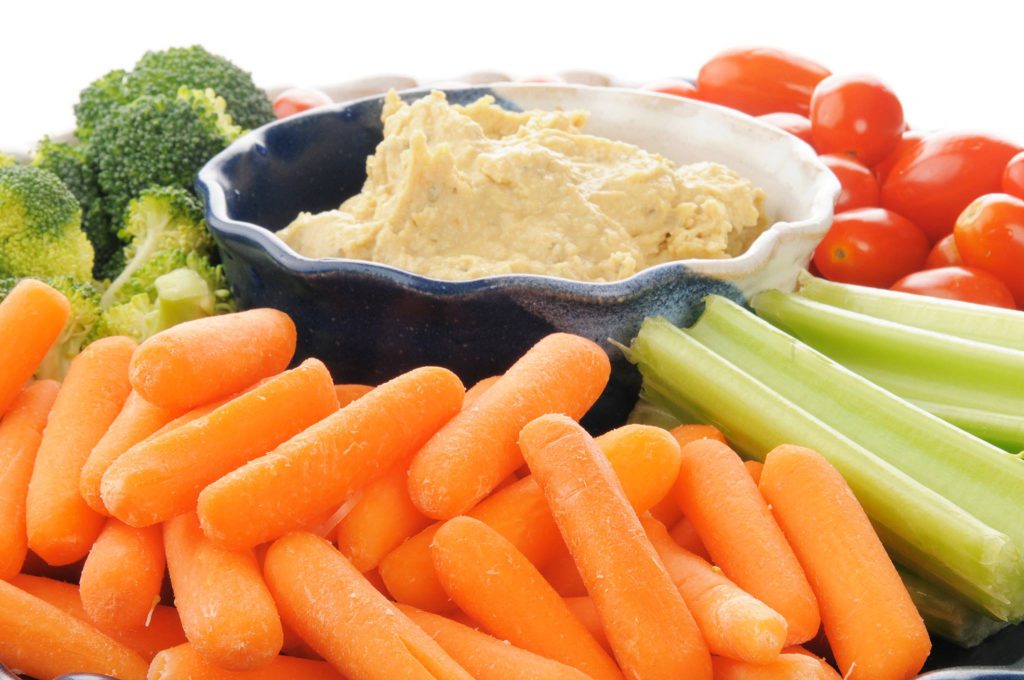“People often view snacks as an energy boost, a hunger-satisfier, a recreational activity, or a treat," says Karen Collins, MS, RDN, CDN, FAND, nutrition advisor to the American Institute for Cancer Research. A more healthful view is that a snack is another opportunity to consume nutrients and boost health, she says.  15 Tips for Snacking Smart
15 Tips for Snacking Smart
- Focus on an eating pattern that promotes a healthy body weight, meets nutrient needs, and lessens the risk for chronic disease
- Pick snack foods that are low in added fat, sugar and sodium, and high in protein, fiber and vitamins/minerals
- Protein with carbohydrates will help you feel the fullest longest
- Pair foods from different food groups to consume a wider variety of nutrients
- If snacks are consumed, balance these choices with meal choices (think about your entire day)
- Consider eating frequency in addition to portion sizes, and be mindful of hunger cues
- Avoid snacking at “off” times, such as too close to mealtimes or late at night
- Plan ahead: pre-portion snacks to promote convenience and avoid overconsumption
- Avoid break room freebies (you might not even realize how often you reach for these items)
- Keep a list of favorite snack foods and/or brands to refer to for ideas
- Don’t forget about liquid calories, including those from sweetened coffees and teas, soda, fruit drinks, and energy drinks
- Be cautious with snacks that appear healthy
- Example: trail mix - oftentimes, these can contain yogurt covered raisins, deep-fried banana chips, chocolate chips or candy pieces, and salted nuts
- Create a list of your favorite snacks to refer to
- Practice reading food labels
- Look at the portion size, fat, sugar, sodium, protein, fiber and the ingredient list
- Use containers that are reusable, or materials that are recyclable to reduce waste
- Organic does not necessarily mean healthy, and these foods can still be processed with a good amount of added fat, sugar and sodium
- Limit intake of added sugars to less than 6 teaspoons (100 calories) for women and 9 teaspoons (150 calories) for men, limit intake of sodium to less than 2,300 mg per day, and limited intake of saturated fat to less than 10% of total calories
| Instead of This | Eat This |
| Cookies, candy, processed baked goods | Fresh or dried fruit, energy balls, dark chocolate, whole-grain baked goods, whole grain dry cereal |
| Pretzels | Popcorn, whole grain crackers, dehydrated vegetables/chickpeas/wasabi peas |
| Fruit snacks, fruit leather | Fresh, frozen or canned fruit without added sugars, dried fruit |
| Potato chips (including fried veggie chips) | Dehydrated vegetable chips, plain baked chips, mixed nuts, whole grain crackers, roasted chickpeas, raw vegetables with dip (hummus, guacamole), seaweed |
| Prepared trail mix | Homemade trail mix |
| Protein bars or granola bars with added sugars | Protein bars or granola bars that limited added sugars or that contain natural sugars (fruit) |
| Soda pop | Flavored water |
| Flavored yogurt | Plain yogurt with fresh or frozen fruit, string cheese |
| Certain nut butters (those that are low fat, hydrogenated, or with added sugars) | Natural nut butter |
| Full fat ice cream | Homemade popsicles, banana “nice” cream, slow-churned ice cream, sorbet, high protein ice cream |
Information provided by Jill Peters, MPH, RDN, LD. Online Resources: Center for Science in the Public Interest – Healthy School Snacks Choose My Plate (USDA) – 10 Tips: MyPlate Snack Tips for Parents Today’s Dietitian (search: snacks)